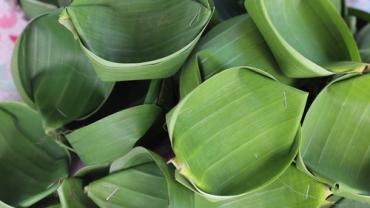
Considering the number of natural compounds isolated from plant species that have been shown to help lower blood glucose, it’s almost as if Mother Nature knew there would come a time when these were needed. Two that spring immediately to mind are berberine and cinnamon, but there are many more. Here, let’s take a look at Banaba leaf and its primary bioactive constituent, corosolic acid.
Banaba (Lagerstroemia speciose, a.k.a. giant crape-myrtle) is native to tropical Southeast Asia and India, and is now grown in tropical and subtropical areas on other continents. The leaves are used to make tea in Japan, Taiwan and the Philippines. (The name Banaba is from the Tagalog language, spoken in the Philippines.) Corosolic acid “exhibits antihyperlipidemic, antioxidant, antiinflammatory, antifungal, antiviral, antineoplastic and osteoblastic activities.” Not bad for something most people have never even heard of! For now, we’ll focus on its blood sugar lowering effects.
Corosolic acid (CA) influences blood glucose through multiple mechanisms, including enhanced cellular uptake of glucose, impaired hydrolysis of sucrose and starches, and decreased gluconeogenesis. Starting with the first—enhanced cellular uptake of glucose, mouse models show that this is due to an increase in the translocation of the GLUT-4 glucose transporter to muscle cell membranes. GLUT-4 is one of the insulin-sensitive transporters, but the increase in translocation was achieved without an increase in plasma insulin. This could be helpful for type-2 diabetics (as well as non-diabetics) who are hyperinsulinemic. For many of these people, more insulin is the last thing they need, as their levels are already chronically high. CA may enhance phosphorylation of the insulin receptor, which would also stimulate better glucose uptake.
Moving on to reduced hydrolysis of sugar and starches, CA is an alpha-glucosidase inhibitor. (Alpha-glucosidase enzymes are active at the “brush border” of the small intestine, where they hydrolyze oligosaccharides and disaccharides to into glucose and other monosaccharides. Inhibition of alpha-glucosidase results in less absorption of glucose, and therefore, less of a rise in blood glucose.) A study in mice showed that corosolic acid given at 10 mg/kg 30 minutes prior to oral administration of liquid sucrose (1 g/kg) significantly reduced the hydrolysis of sucrose in the small intestine. There were no significant differences in hydrolysis of lactose or maltose, however, suggesting that the effect may be specific to sucrose. (Not that that’s a strike against corosolic acid; the majority of “sugar” in most people’s diets likely comes from sucrose anyway.) Banaba leaf extract contains many compounds with similar structure to CA, but CA is the only one that has shown significant inhibition of alpha-glucosidase, and none has shown inhibition of alpha-amylase, which may be why the hypoglycemic effects are limited to sucrose.
Regarding inhibition of gluconeogenesis, studies in diabetic rats show that corosolic acid inhibits the gluconeogenic enzymes glucose-6-phosphatase and fructose-1,6-diphosphatase, and may stimulate glucose oxidation via the pentose phosphate pathway.
Fortunately, we don’t have to hang our hats on mouse studies and in vitro enzyme activity. A review of animal and human studies reported the findings of several human studies, in which corosolic acid was shown to lower blood glucose in type 2 diabetics as well as non-diabetics with elevated fasting glucose, with the range of reduction spanning 10-30%. (Only one study showed a 30% reduction; most were closer to 10-15%, which is still nothing to sneeze at.) A study looking at the effect of CA on glucose levels after an oral glucose tolerance test (75 grams of glucose) showed that compared to placebo, 10 mg of CA administered in capsule form 5 minutes prior to the glucose challenge resulted in lower blood glucose from 60 to 120 minutes, reaching significance at the 90 minute mark. It would be interesting to see if results might be even better if CA were administered more than just 5 minutes prior, and if a sucrose challenge could be done.
No adverse effects have yet been reported in animals or humans using corosolic acid or standardized Banaba extracts. However, studies have not been designed specifically to assess toxicity or LD50 values for corosolic acid or Banaba extract. Like berberine or cinnamon, using Banaba extract alone isn’t likely to bring anyone out of the pre-diabetic or diabetic category, but it can certainly be used as an adjunct to diet and lifestyle changes.